Every now and then I have been featuring City animals in the blog and I am going to to pick out again some of the ones I like best.
There is the grumpy dolphin from The Ship pub in Hart Street (EC3R 7NB) …
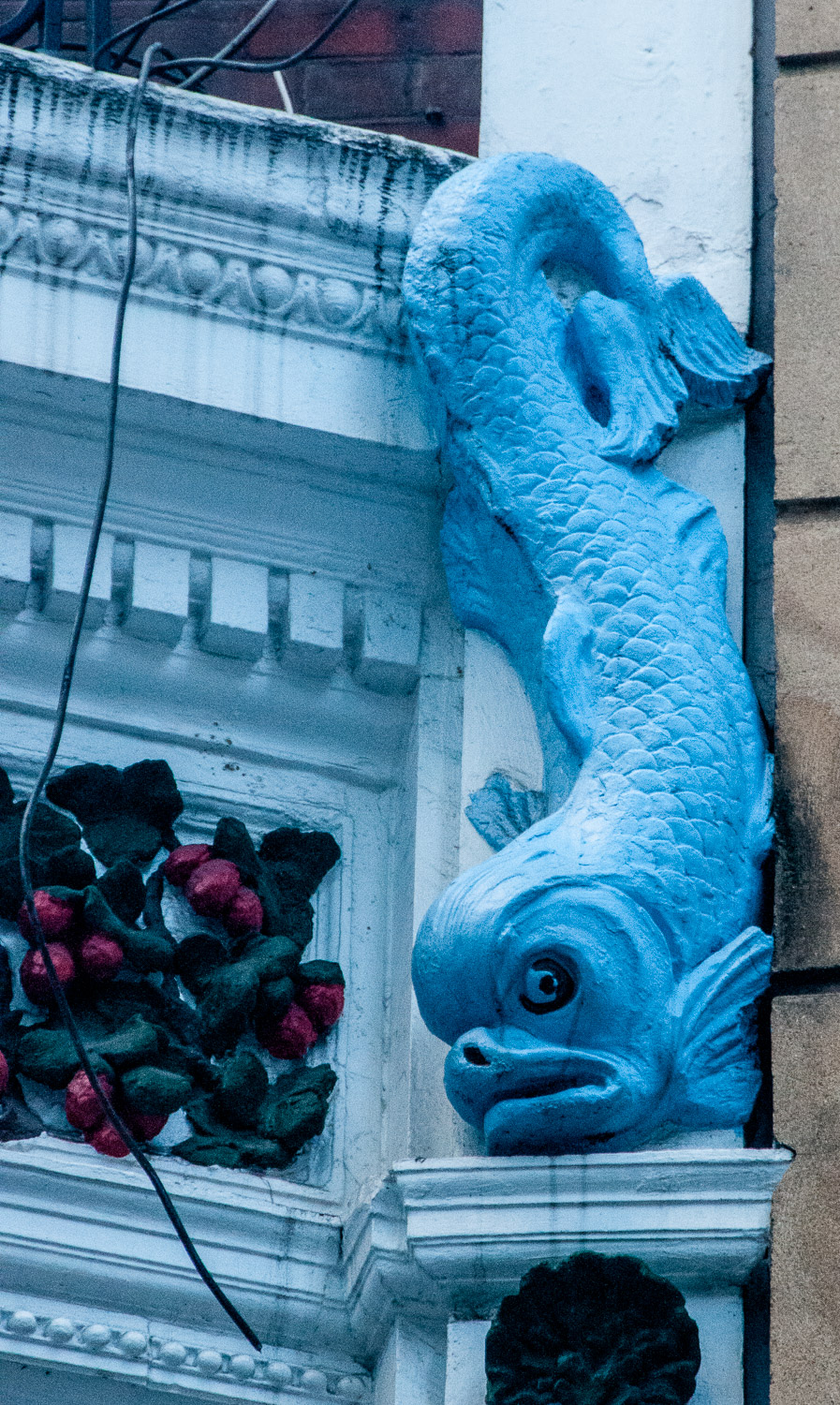
What about this splendid animal standing outside Spitalfields Market with Hawksmoor’s 1714 masterpiece, Christ Church, Spitalfields, in the background …
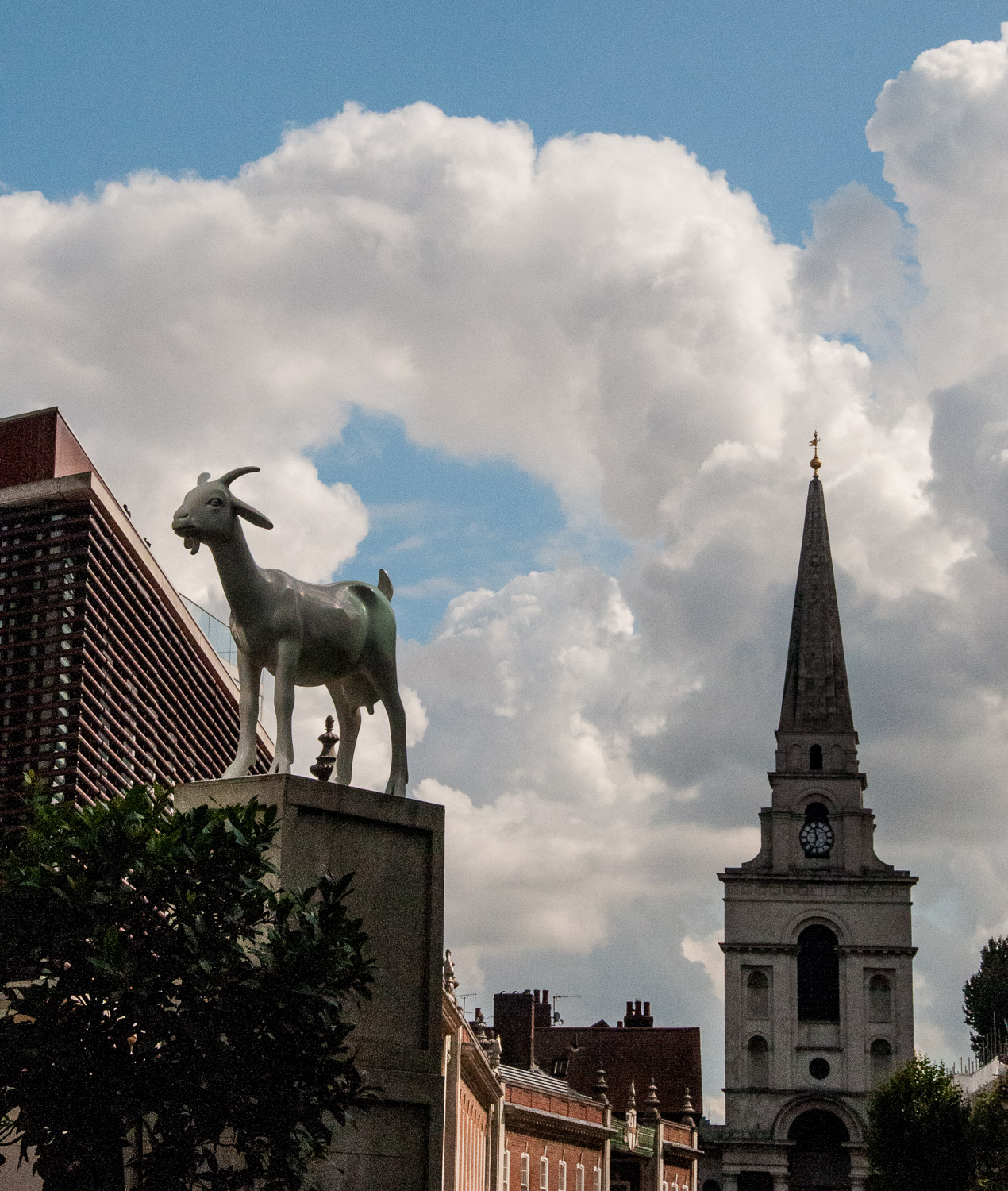
Wonderfully entitled I Goat, it was hand sculpted by Kenny Hunter and won the Spitalfields Sculpture Prize in 2010 (E1 6AA). The artist commented …
Goats are associated with non-conformity and being independently-minded. That is also true of London, its people and never more so than in Spitalfields.
This honey bee is, appropriately, a keystone over the entrance to Honey Lane which connects Cheapside with Trump Street (EC2V 6DB).
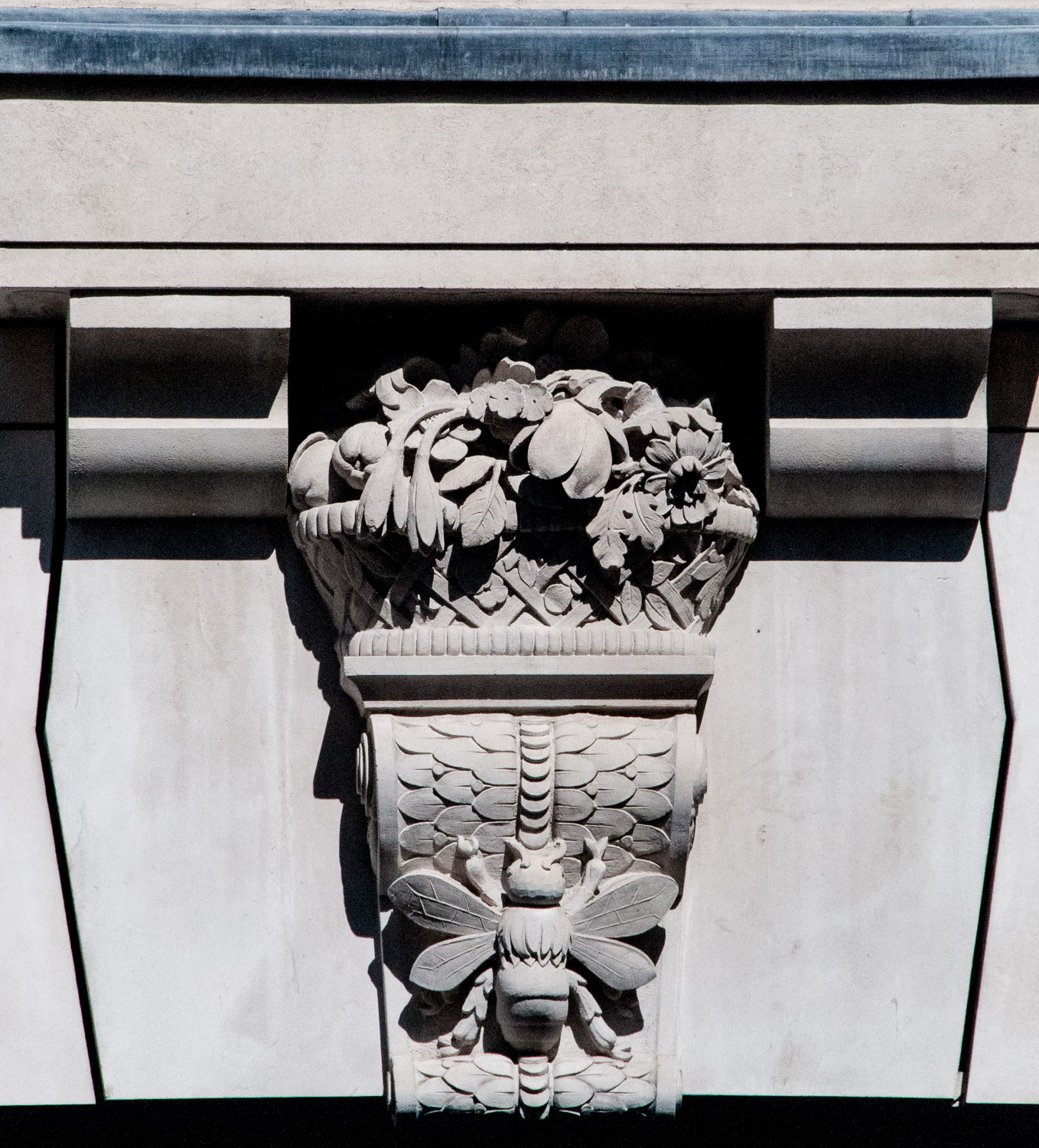
It is part of the old headquarters of The Sun Life Assurance Society whose Zodiac covered entrance I wrote about in my earlier blog Looking at the Stars. Although the connection to Honey Lane is obvious, it’s possible the insurance company also liked the reputation bees have for industriousness and providing for the future. The name of the lane comes from the bee-keepers who used to live there and it also once led to All Hallows Honey Lane, a medieval church destroyed in the Great Fire.
This little Scottish terrier is called Chippy. He rests now in All Hallows by the Tower at the feet of his master the Reverend ‘Tubby’ Clayton CH MC who became vicar of the Church in 1922 and remained there until 1963. He is best known for his work initially as an army chaplain during the First World War and in particular the establishment of Talbot House, a unique place of rest and sanctuary for British troops. After the war the spirit and intent of Talbot House became expressed through the Toc H movement.
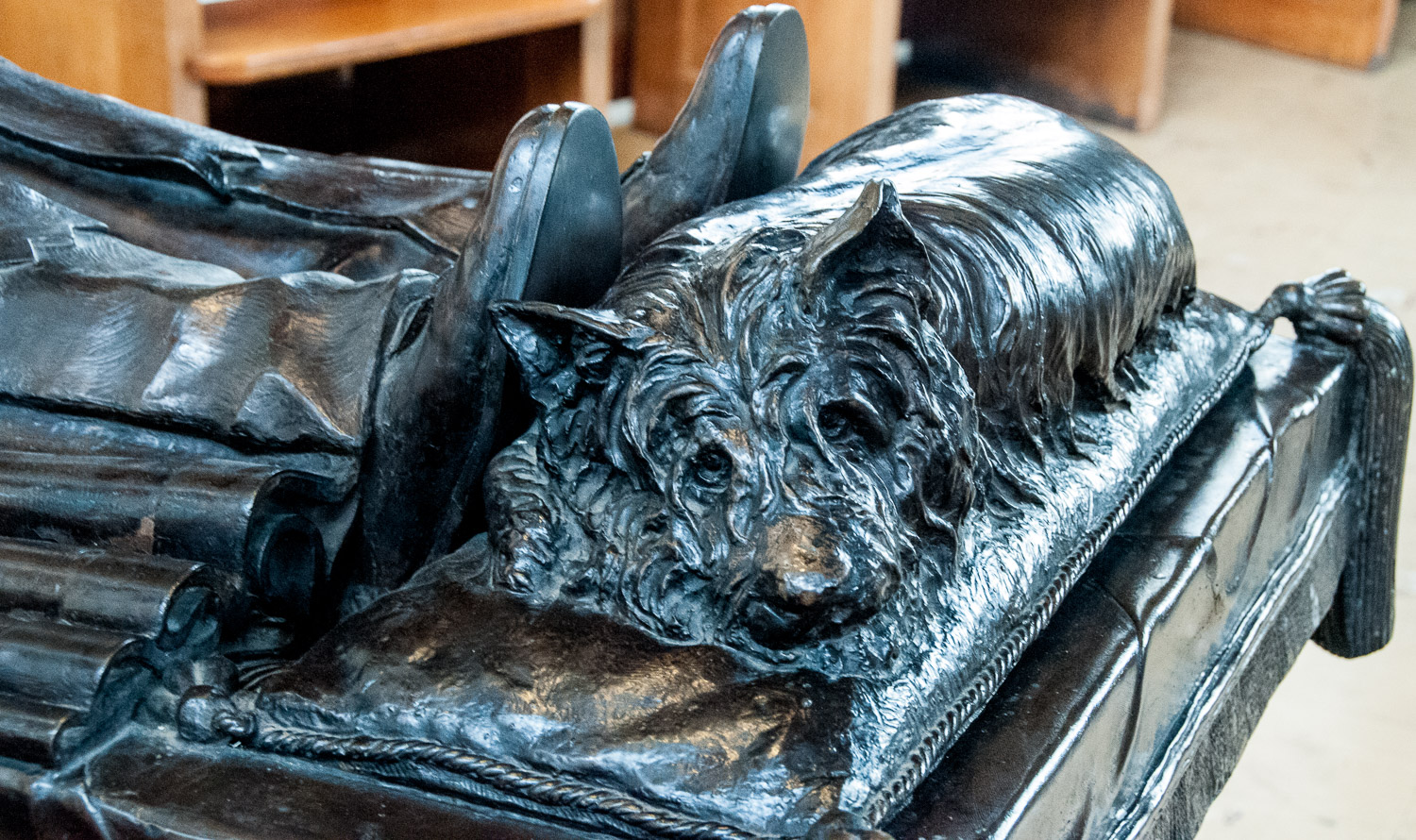
A wise owl gazes at the commuters as they trek over London Bridge from his perch on the House of Fraser store opposite the north entrance to the bridge.
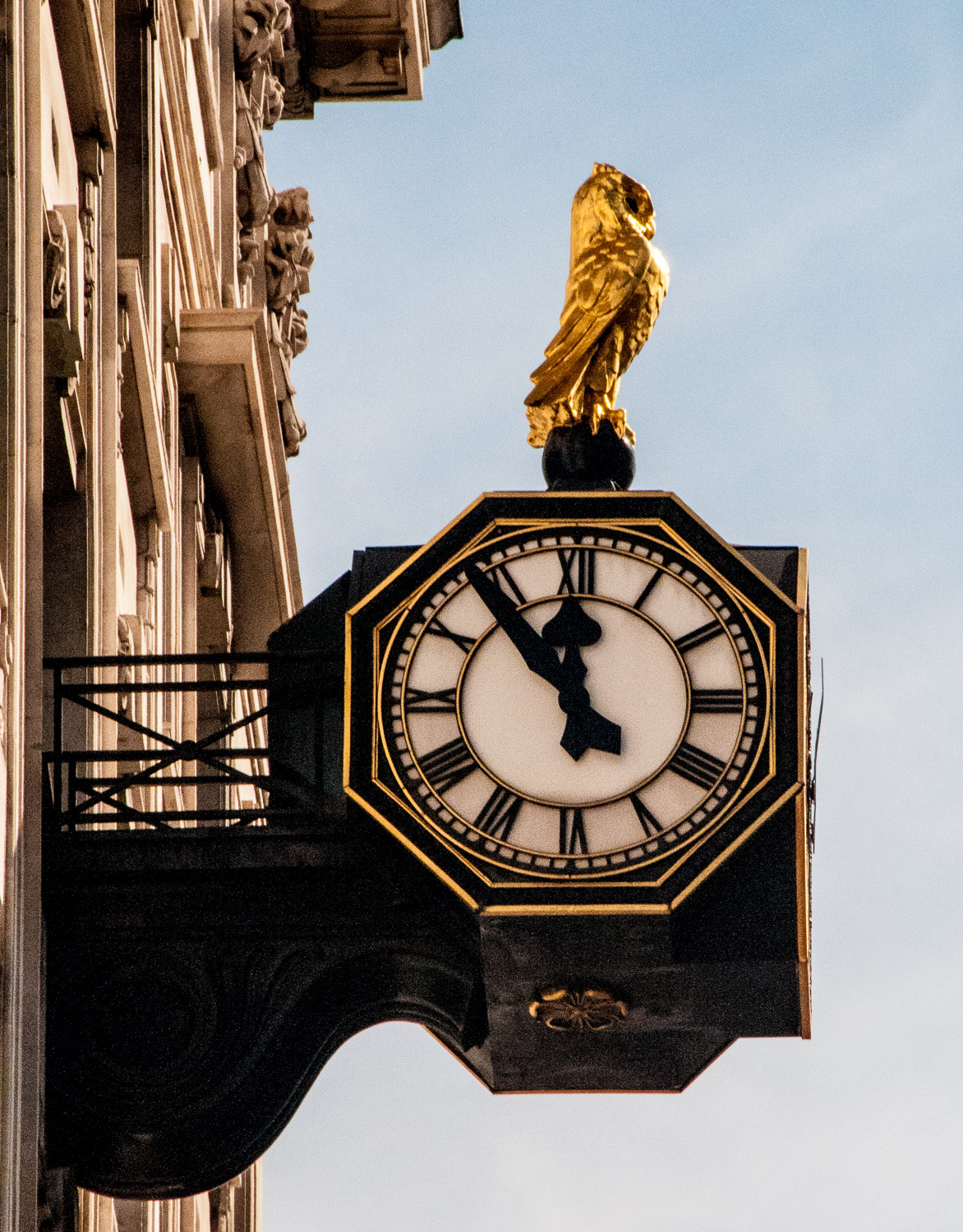
As you approach the Bank junction from Cheapside look up and you will see two young boys at either end of the grand building that was once the City headquarters of Midland Bank (1935). The are both struggling with a rather angry looking Goose …
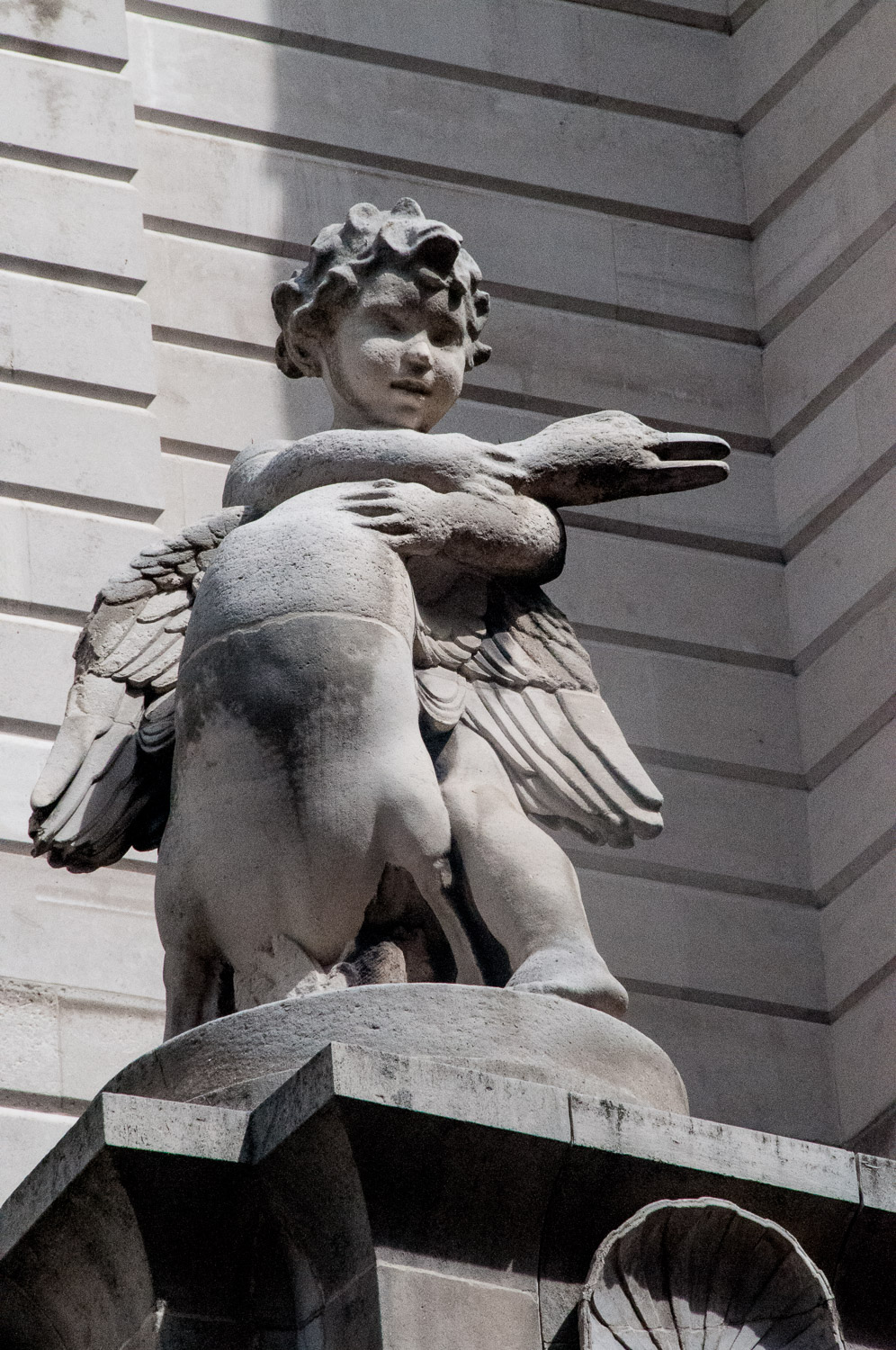
Why a goose? A clue is the ancient name of the street and the goose was a suggestion by the architect Sir Edwin Lutyens to commemorate its original market function. The building is now a private club and restaurant, called The Ned in Sir Edwin’s honour (he would no doubt be chuffed).
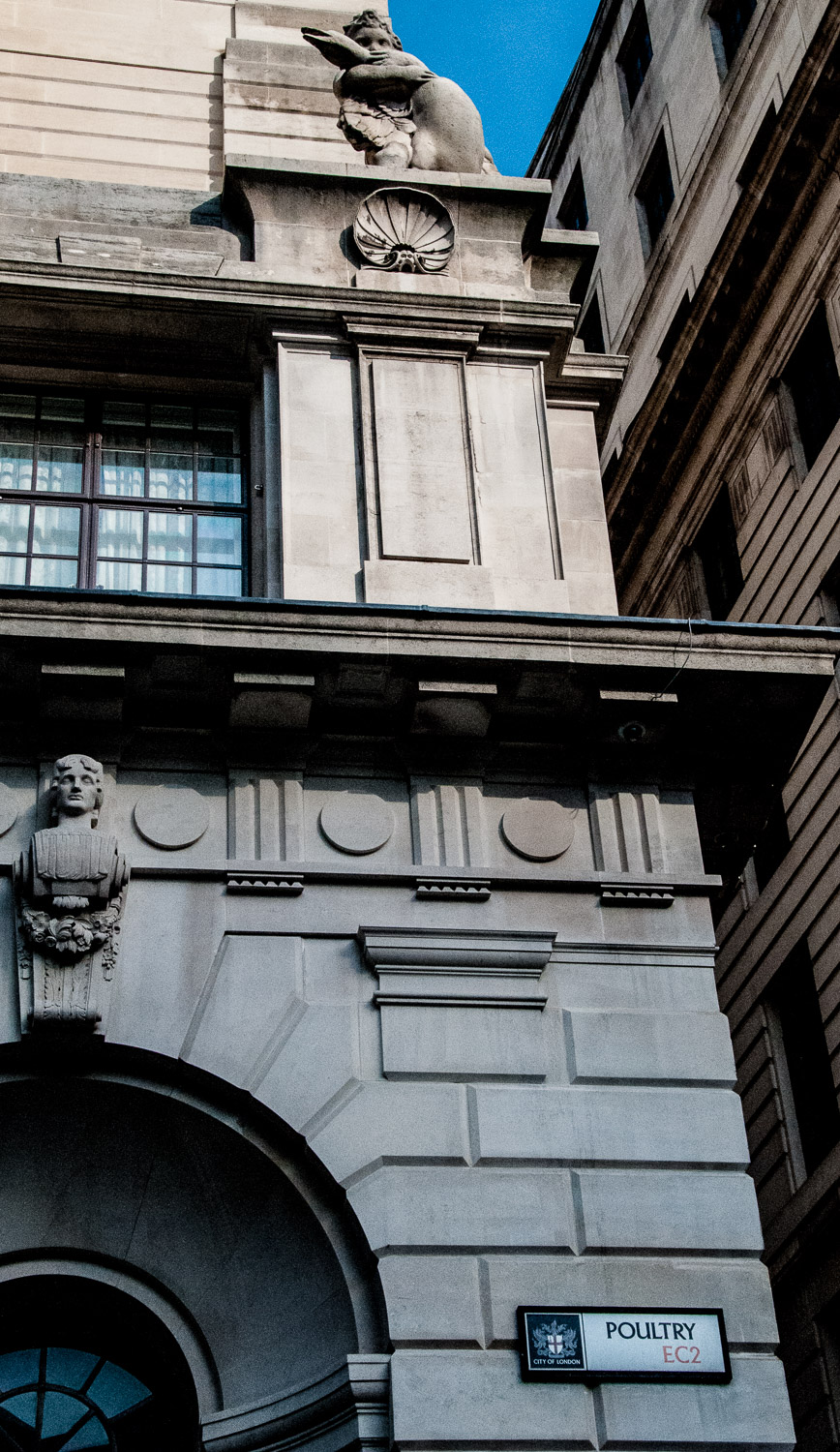
This magnificent leaping fox appears on the exquisite Grade II listed Art Deco shopfront of the Fox company, who manufactured and repaired umbrellas. Mr Fox opened his first shop in the City in 1868 but this shop dates from 1935. You can still purchase a classy Fox umbrella if you go to their website, but the shop is now a wine bar.
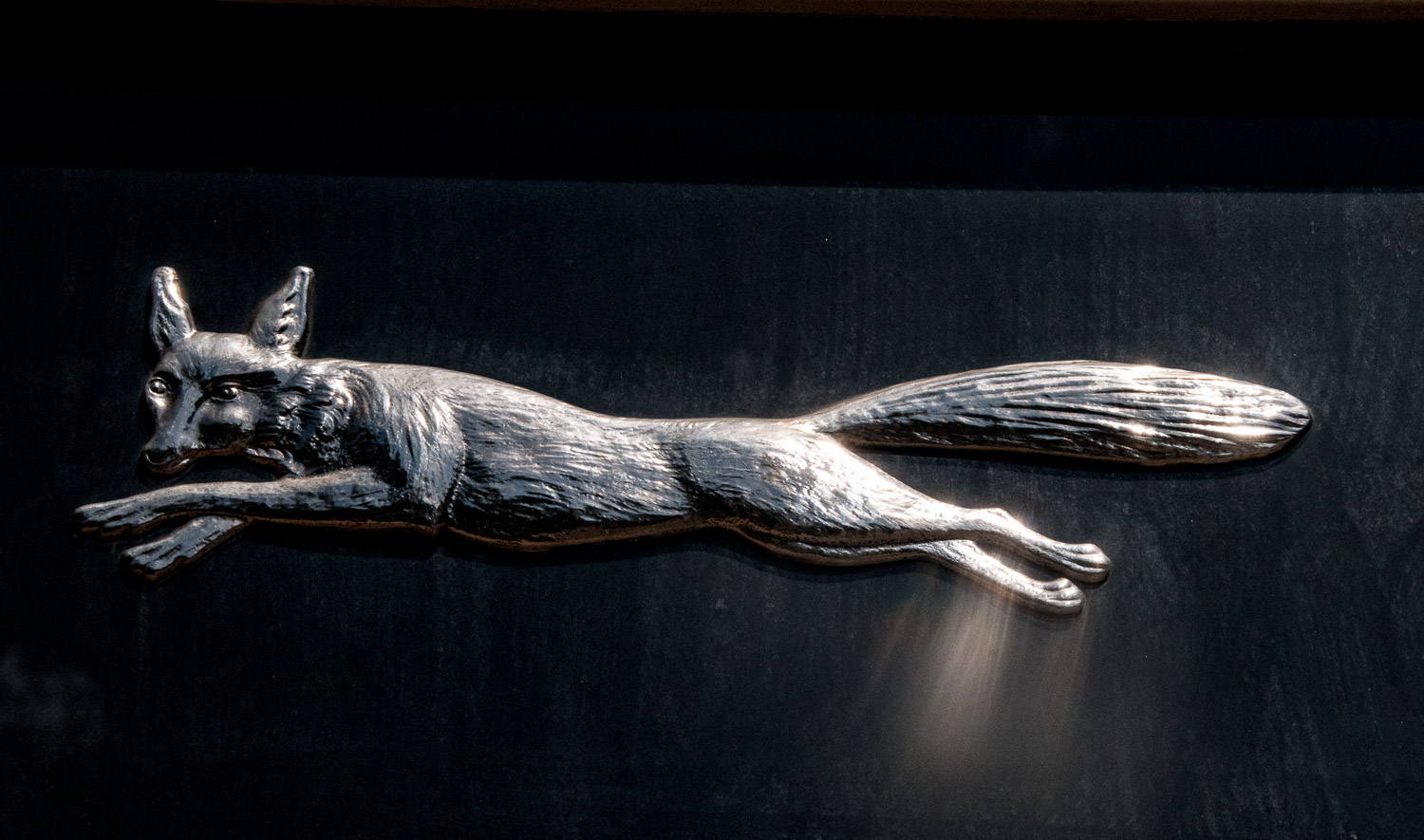
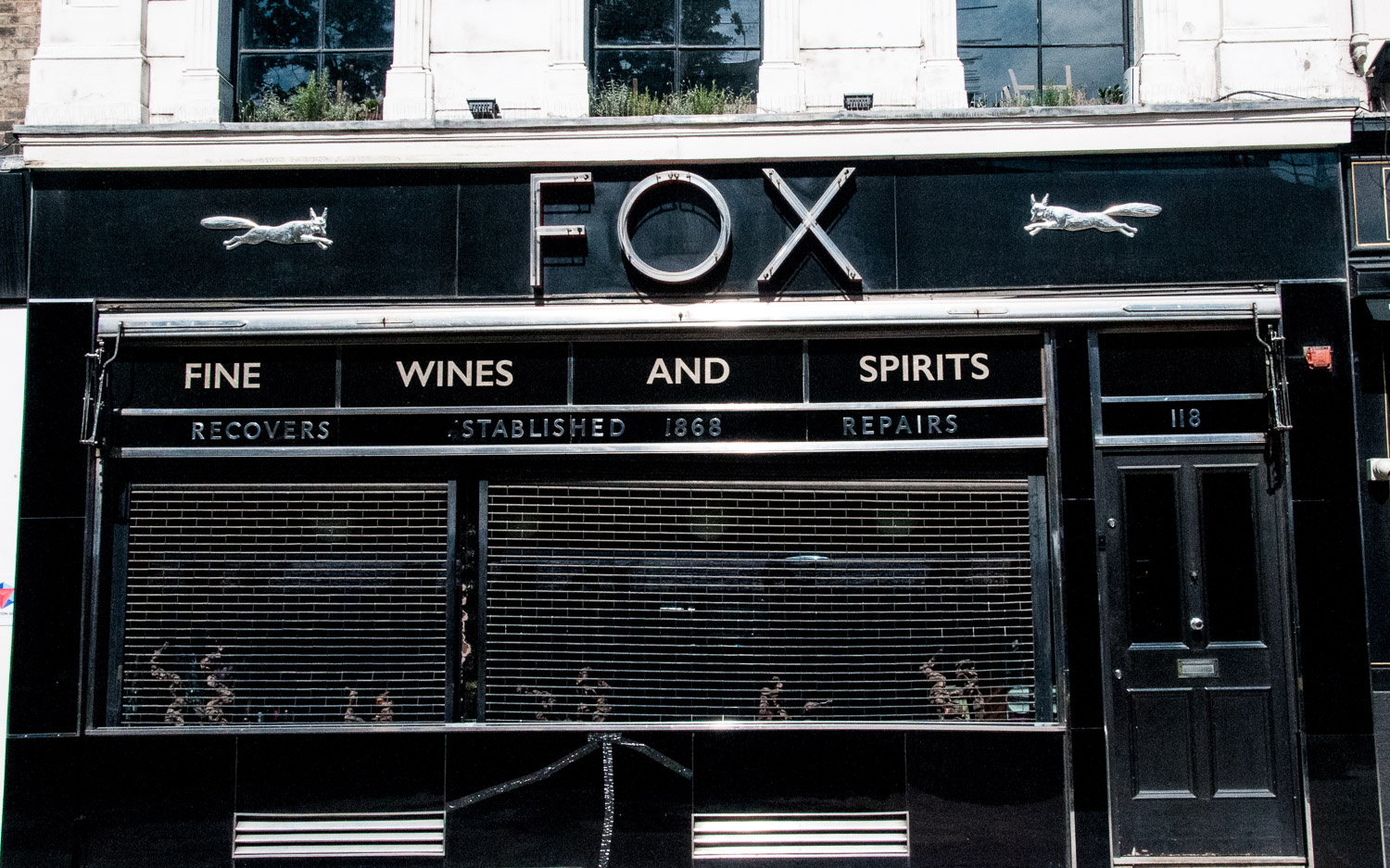
Once surrounded by the throbbing printing presses of Fleet Street newspapers, Gough Square is today a quiet haven off the noisy main road. Now known as Dr Johnson’s House, 17 Gough Square was built by one Richard Gough, a City wool merchant, at the end of the seventeenth century. It is the only survivor from a larger development and Dr Johnson lived here from 1748 to 1759 whilst compiling his famous dictionary …
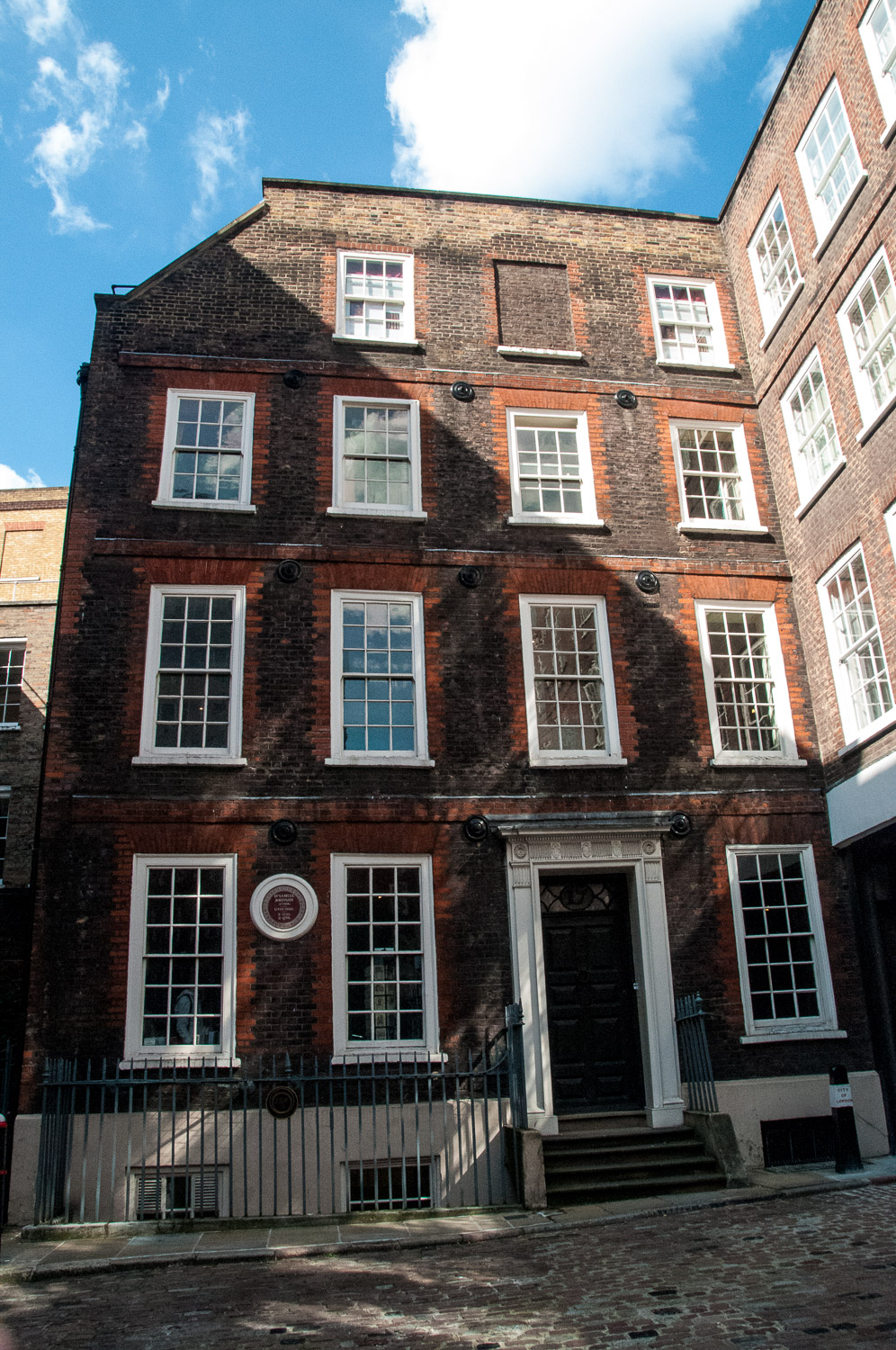
Nearby, Johnson’s most famous cat, Hodge, is remembered by this attractive bronze by John Bickley which was unveiled by the Lord Mayor, no less, in 1997. Hodge sits atop a copy of the dictionary and alongside a pair of empty oyster shells. Oysters were very affordable then and Johnson would buy them for Hodge himself. James Boswell, in his Life of Johnson, explained why:
I never shall forget the indulgence with which he treated Hodge, his cat: for whom he himself used to go out and buy oysters, lest the servants having that trouble should take a dislike to the poor creature
People occasionally put coins in the shell for luck and every now and then Hodge is given a smart bow tie of pink lawyers’ ribbon.
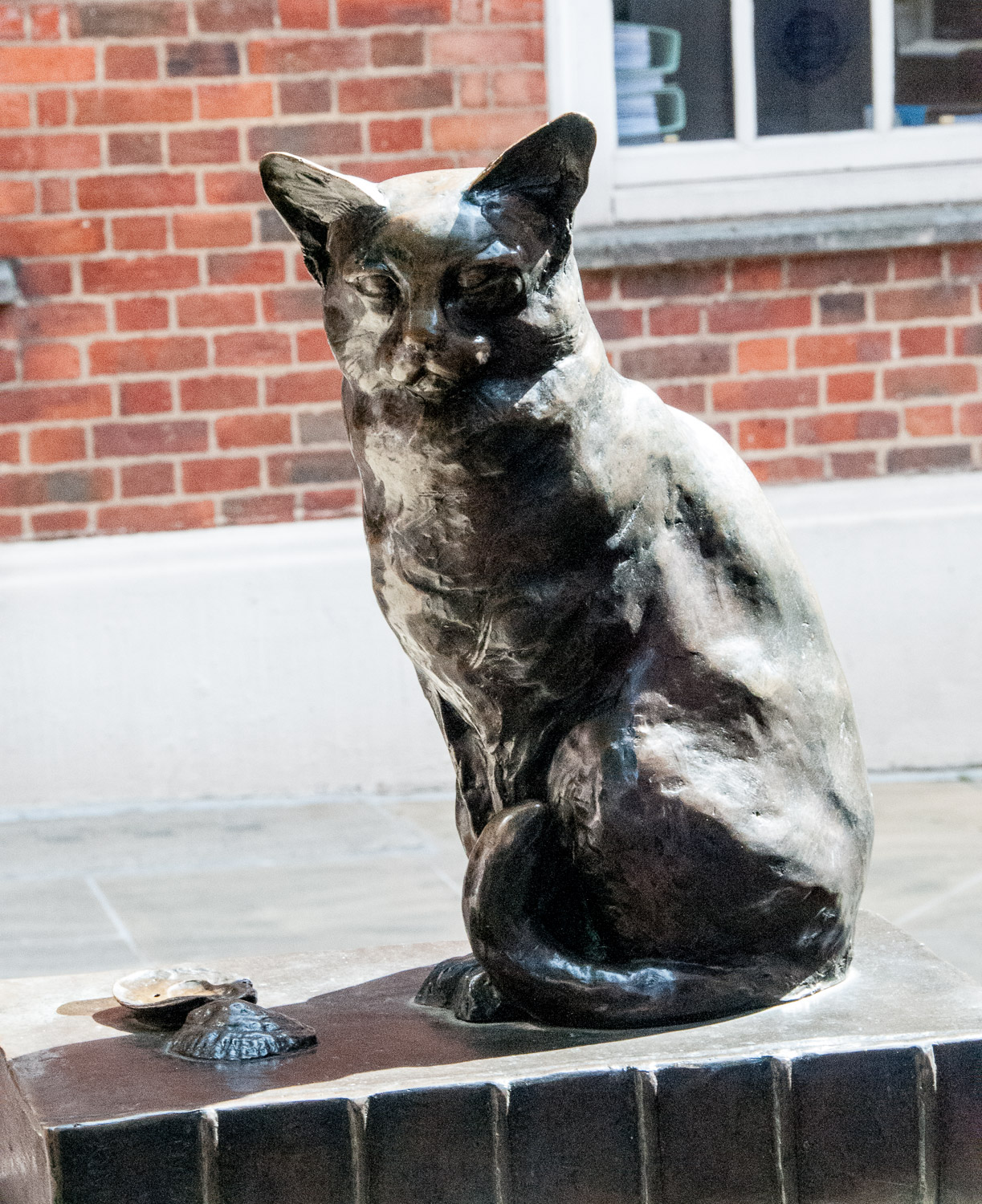
And finally, from a famous cat to mysterious mice. Nibbling a piece of cheese, they add charm to a building in Philpot Lane off Eastcheap and have been described as London’s smallest sculpture. Even though they have been repainted they are still a bit hard to find – so I am not saying precisely where they are, and hopefully you will enjoy looking for them. One theory is that the builders in 1862 were pestered by mice who persistently ransacked their lunch packs, so they left this little informal tribute. Another is that they commemorate a man who died during the construction of the nearby Monument to the Great Fire. Mice had eaten his lunch, but he accused a fellow worker by mistake, and fell to his death in the fight that followed. As to the true story behind the little rodents, your guess is as good as mine.

